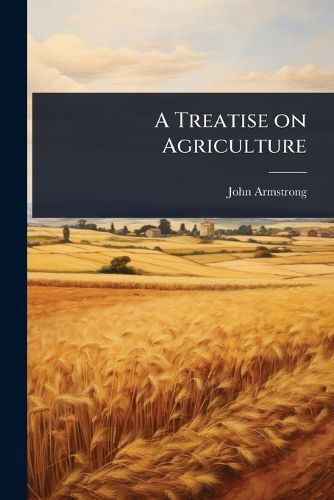Readings Newsletter
Become a Readings Member to make your shopping experience even easier.
Sign in or sign up for free!
You’re not far away from qualifying for FREE standard shipping within Australia
You’ve qualified for FREE standard shipping within Australia
The cart is loading…






This title is printed to order. This book may have been self-published. If so, we cannot guarantee the quality of the content. In the main most books will have gone through the editing process however some may not. We therefore suggest that you be aware of this before ordering this book. If in doubt check either the author or publisher’s details as we are unable to accept any returns unless they are faulty. Please contact us if you have any questions.
"A Treatise on Agriculture" by John Armstrong offers a comprehensive exploration of agricultural practices, tracing their historical development and examining the contemporary conditions of farming in the mid-19th century. This detailed work delves into various aspects of agriculture, from soil management and the use of manure and gypsum to the cultivation of crops such as turnips, flax, clover, and Indian corn. Armstrong's treatise also discusses innovative techniques, including the use of espalier and the reclamation of bog earth.
Drawing upon the knowledge of botanists and the wisdom of historical figures like Pliny, this book provides valuable insights into the scientific and practical elements of agriculture. It is an essential resource for those interested in the history of agriculture and the evolution of farming methods.
This work has been selected by scholars as being culturally important, and is part of the knowledge base of civilization as we know it. This work was reproduced from the original artifact, and remains as true to the original work as possible. Therefore, you will see the original copyright references, library stamps (as most of these works have been housed in our most important libraries around the world), and other notations in the work.
This work is in the public domain in the United States of America, and possibly other nations. Within the United States, you may freely copy and distribute this work, as no entity (individual or corporate) has a copyright on the body of the work.
As a reproduction of a historical artifact, this work may contain missing or blurred pages, poor pictures, errant marks, etc. Scholars believe, and we concur, that this work is important enough to be preserved, reproduced, and made generally available to the public. We appreciate your support of the preservation process, and thank you for being an important part of keeping this knowledge alive and relevant.
$9.00 standard shipping within Australia
FREE standard shipping within Australia for orders over $100.00
Express & International shipping calculated at checkout
This title is printed to order. This book may have been self-published. If so, we cannot guarantee the quality of the content. In the main most books will have gone through the editing process however some may not. We therefore suggest that you be aware of this before ordering this book. If in doubt check either the author or publisher’s details as we are unable to accept any returns unless they are faulty. Please contact us if you have any questions.
"A Treatise on Agriculture" by John Armstrong offers a comprehensive exploration of agricultural practices, tracing their historical development and examining the contemporary conditions of farming in the mid-19th century. This detailed work delves into various aspects of agriculture, from soil management and the use of manure and gypsum to the cultivation of crops such as turnips, flax, clover, and Indian corn. Armstrong's treatise also discusses innovative techniques, including the use of espalier and the reclamation of bog earth.
Drawing upon the knowledge of botanists and the wisdom of historical figures like Pliny, this book provides valuable insights into the scientific and practical elements of agriculture. It is an essential resource for those interested in the history of agriculture and the evolution of farming methods.
This work has been selected by scholars as being culturally important, and is part of the knowledge base of civilization as we know it. This work was reproduced from the original artifact, and remains as true to the original work as possible. Therefore, you will see the original copyright references, library stamps (as most of these works have been housed in our most important libraries around the world), and other notations in the work.
This work is in the public domain in the United States of America, and possibly other nations. Within the United States, you may freely copy and distribute this work, as no entity (individual or corporate) has a copyright on the body of the work.
As a reproduction of a historical artifact, this work may contain missing or blurred pages, poor pictures, errant marks, etc. Scholars believe, and we concur, that this work is important enough to be preserved, reproduced, and made generally available to the public. We appreciate your support of the preservation process, and thank you for being an important part of keeping this knowledge alive and relevant.